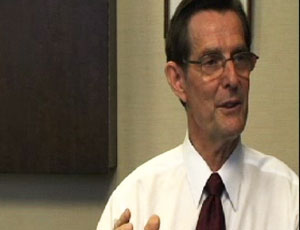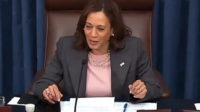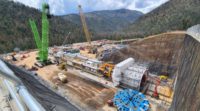A 32-year veteran of Parsons Brinckerhoff Inc., one of the industry�s oldest and most prestigious firms, Hawksworth was named CEO in January, 2008, succeeding Thomas J. O�Neill. ENR business editors Debra K. Rubin and Richard Korman sat down recently with Hawksworth in PB�s Manhattan headquarters and talked about how the engineer and program manager is reorganizing and restrategizing. Among the topics covered: a recent merger deal PB seriously considered; the company�s push for improved marketing; the ramifications of the financial crisis and the legacy of the Big Dig.

How challenging is the competitive marketplace for a global firm of your size?
We’re what you’d call a “mini mega” size firm, where your ability to provide program management around the world is stretched. But that doesn’t mean you can’t compete, it just means you have to pick two or maybe three markets and be selective in how you operate in them. If growth is your goal and you’re competing against firms that can marshal greater resources, you’ll be struggling. There’s a shortage of good people and delivery capability so you really have to focus your efforts.
Is a merger or acquisition still ahead?
We continue to hold merger and acquisition discussions but financially we don’t have to do anything. We can meet our financial requirements now. Culture and character is very important to the company. Some very competent people have come into PB and have left because of the character issue. You have to look for people who share your values and that’s not easy.
How have PB’s results been affected by market changes?
We doubled internationally in revenue from 2005 to 2008 but now we’ve leveled off. It’s difficult to say if it is just the global financial crisis or other factors that contributed more to this. We’ve seen a slowdown in project starts, but we will still make our operational targets this year. We will deliver to plan. It’s been slower but we can live with it.
What is the gist of PB’s market focus strategy going forward?
Transportation is still our core business anywhere in the world and we want to focus on restoring our position. We are strong in transportation and we don’t want to lose that.
We won’t be challenging the big guys in the near term, but our longer-term target, with a merger or acquisition, is to become a major player in three of four markets. Those would be transportation, energy, federal and institutional, and water. We have a good business in the power and energy sector and in the federal market, but we’ve never had a growth strategy. All of our Middle East power projects involve both power and water plants. We’d like to bring that expertise to the US.
What’s the nature of your marketing push?
I’ve never ever been in a market where you can’t get business if you decide you want it. Our marketing force was once feared and respected by the competition but it’s fallen away somewhat, so we brought back David McAllister as executive vice president to head up the strategic marketing function across all markets and globally. This is a position we never had before.
What’s the impact of 2008 Big Dig financial settlement?
The settlement made us much more aware of risk. There were huge misunderstandings about scope creep. We considered our industry low-risk but after the Big Dig experience, we put a huge effort into risk management. We used to think design was more risky than project management. Now we see you can have problems on any of the services you provide. But I don’t believe it will have a lasting effect on PB finances or reputation, just on the way we do business. You’re as good as your last job, so once you’ve done another job and it’s good, your reputation is restored.
You’re in your 60s now. What’s your outlook for remaining in this job?
I’m hoping we can set the company in the right direction. We’ve been developing new managers, but I don’t see any immediate change for me. We’re putting together a very strong bench at this point but I will stay on.







Post a comment to this article
Report Abusive Comment